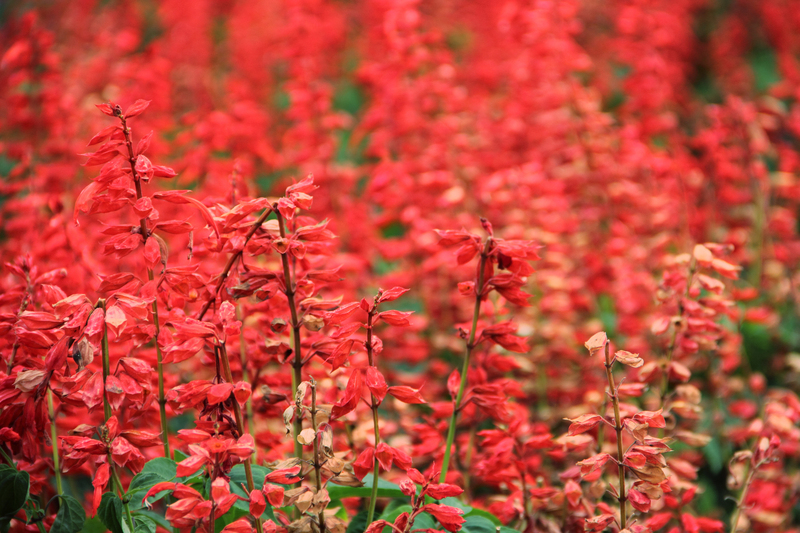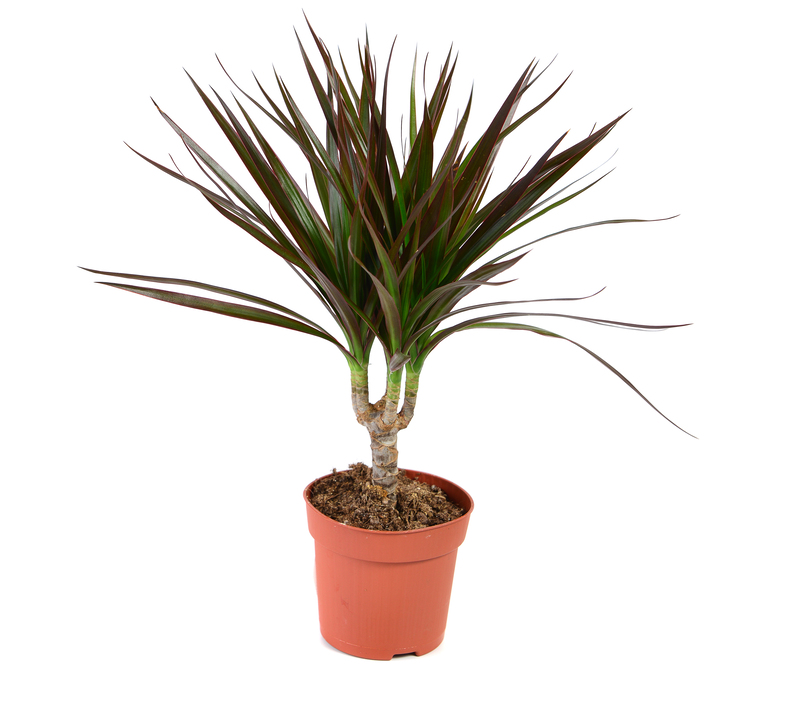Fostering Growth: How to Build a Child-Friendly Garden
Posted on 11/06/2025
Fostering Growth: How to Build a Child-Friendly Garden
Gardening is more than just a pastime--it's a joyful and educational experience, especially for children. Cultivating a child-friendly garden allows young minds to engage with nature, learn invaluable life skills, and develop a deep appreciation for the environment. In this comprehensive guide, we'll walk you through everything you need to know about creating a safe, fun, and inspiring garden designed especially for kids. Discover practical tips, creative ideas, and essential steps for fostering growth in your little ones through garden adventures.
Why Create a Child-Friendly Garden?
A garden for children does so much more than beautify your backyard--it becomes a nurturing space for imagination, exploration, and healthy development. Here's why designing a garden space for kids is a meaningful investment:
- Educational Benefits: Hands-on gardening teaches kids about biology, ecology, and nutrition.
- Emotional Growth: Tending to plants fosters responsibility, patience, and mindfulness.
- Physical Activity: Digging, planting, and watering encourage active lifestyles.
- Creativity and Curiosity: A garden full of textures, smells, and colors sparks imagination and inquiry.
- Family Bonding: Gardening together is a great way to connect and make lasting memories.

Planning Your Child-Friendly Garden
Every successful kid-friendly garden starts with thoughtful planning. Consider the following aspects before you put in the first seed:
Location, Safety, and Accessibility
- Pick the right spot: Choose a sunny, level part of the yard that is easily visible from your home.
- Ensure accessibility: The garden should be easy for children to reach and maneuver around, ideally placed near water sources and shade.
- Prioritize safety: Remove toxic plants, sharp objects, and any chemical products. Fence off ponds or water features.
Involving Your Children in the Process
Invite your kids to participate in the garden design process. Not only will this make the space feel special, but it's also a great way to teach decision-making and accountability. Ask them:
- What colors or plants are they excited about?
- Would they prefer a vegetable patch or flower bed?
- Do they want a space for play or quiet observation?
Choosing the Right Plants for Kids
An essential aspect of any child-friendly garden is the selection of plants. For safety, engagement, and senses, choose species that are:
- Non-toxic and safe to touch or taste
- Easy to grow and maintain
- Colorful and fragrant to stimulate the senses
Best Plants for a Garden with Children
- Sunflowers: Tall, fast-growing, and rewarding to watch.
- Strawberries: Delicious to eat and easy for kids to harvest.
- Peas and Beans: Simple to sow and fun to pick.
- Cherry Tomatoes: Vibrant, edible, and perfect for little hands.
- Pumpkins: Let your children grow their own Halloween decorations!
- Herbs like mint, basil, and chives: Quick to sprout, aromatic, and edible.
- Marigolds and Nasturtiums: Edible flowers that add color and interest.
Designing an Engaging and Safe Garden Space
A truly garden for children should be more than a patch of earth; it's a world to explore. Here's how to build a space that captures their imagination:
Sections and Zones
- Mini vegetable patches or raised beds: Designate small, manageable spaces for kids to plant and tend their own crops.
- Flower tunnels and sensory paths: Mix flowers with fragrant herbs and textured plants like lamb's ear or ornamental grasses.
- Hidden nooks: Build teepees using beanpoles or willow branches for quiet reading or shaded play.
- Sand or mud kitchens: Encourage imaginative, nature-inspired play with a space for mixing, building, and 'cooking' outdoors.
- Bug hotels and bird feeders: Add vertical features that attract wildlife and allow for nature observation.
Safety Tips
- Stay away from prickly or toxic plants like foxglove, oleander, or poison ivy.
- Keep paths clear using non-slip surfaces made from bark, gravel, or stepping stones.
- Supervise water features and cover ponds when not in use.
- Use organic fertilizers and avoid harsh chemicals.
Incorporating Educational Elements
A child-centered garden is the perfect outdoor classroom. Make learning fun by integrating these ideas:
- Plant markers: Label plants with DIY signs made from stones, popsicle sticks, or painted wood.
- Measuring and Charting growth: Encourage kids to track the progress of their plants using a garden journal.
- Composting: Teach children about the life cycle by helping them compost kitchen scraps and garden clippings.
- Pollinator plots: Design areas with bee- and butterfly-friendly flowers and talk about the importance of pollinators.
- Science experiments: Test different soils, try sprouting beans in jars, or track the effects of sunlight on growth.
Fostering Creativity Through Play
The right child-friendly garden design includes opportunities for open-ended play--one of the best ways to learn and grow.
- Nature scavenger hunts: Create lists of seasonal plants, bugs, and colors for kids to discover.
- Art corners: Set up an easel or table for rock-painting, leaf prints, and nature crafts.
- Music and movement: Wind chimes, stepping logs, or balance beams made from natural materials provide sensory fun.
Maintenance: Teaching Responsibility
A garden designed for children doubles as a classroom for responsibility and life skills. Involve young gardeners in day-to-day upkeep:
- Watering: Assign watering duties and use colorful kid-sized watering cans.
- Weeding: Teach which plants to pull and how to spot seedlings worth keeping.
- Harvesting: Guide kids when and how to pick fruits, veggies, or flowers.
- Cleaning and organizing tools: Educate about tool care and storage to reinforce good habits.
Seasonal Activities to Keep Kids Engaged
One of the joys of family-friendly gardening is that every season brings new adventures. Try these activities each season:
Spring
- Seed starting: Begin indoors with pots, egg cartons, or recycled containers.
- Wildflower sowing for quick and colorful results.
Summer
- Regular watering games--who can water the most plants?
- Harvest picnics to enjoy fresh strawberries, peas, or cherry tomatoes in the garden.
Fall
- Pumpkin harvesting and carving for Halloween.
- Planting spring bulbs for next year's blooms.
Winter
- Building bird feeders and bug hotels from pinecones, seed, and twine.
- Planning next year's garden using catalogues or drawing maps.
Overcoming Challenges in a Child-Friendly Garden
Building and maintaining a kid-safe garden isn't without its hurdles. Here's how to handle common setbacks:
- Pest Management: Opt for natural solutions like introducing ladybugs or using neem oil instead of pesticides.
- Short attention spans: Give quick-win projects like growing radishes or cress, which sprout rapidly.
- Sensory issues: Some children dislike certain textures or smells--offer choices and alternatives.
- Limited space: Use pots, vertical gardens, or windowsill planters for urban or small plots.

Tips for Long-Term Success
To ensure your children's garden continues to thrive, keep these tips in mind:
- Rotate crops annually to avoid depleting soil and prevent disease.
- Keep projects age-appropriate and adapt as your child grows in skills and confidence.
- Celebrate successes: Hold mini 'harvest festivals' or photo days to showcase your family's hard work.
- Encourage independent exploration within established boundaries to foster confidence and initiative.
Conclusion: Growing Together as a Family
Creating a child-focused garden is a rewarding journey that plants more than just flowers and vegetables--it sows the seeds for curiosity, connection, and lifelong stewardship of the earth. Whether you're starting small with a windowsill planter or transforming a backyard plot, the memories and lessons harvested along the way are sure to last a lifetime.
So gather your gloves, invite little helpers, and start fostering growth in your family--one plant, one day, one joyful discovery at a time.
Keywords:
- Child-friendly garden
- Garden for children
- Kid-friendly garden
- Garden designed for children
- Family-friendly gardening
- Building a garden for kids
- Children's garden tips

